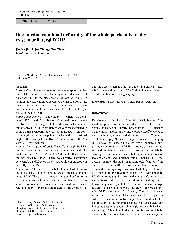摘要
Introduction There are no reports on the morphologic features of the entire pelvis in the subgroup of dislocation of hips according to the classification system of Tonnis. In addition, the correlation of excessive medial rotation of the lower pelvis with the increased acetabular anteversion was uncertain in the children with unilateral developmental dysplasia of the hip (DDH).
Patients and methods In the study, 74 patients with unilateral DDH and 31 subjects of normal control were involved, and the images of three-dimensional computed tomography (3D-CT) were retrospectively reconstructed to compare the acetabular anteversion angle (AA), the rotational angle of the upper pelvis (URA), and the rotational angle of the lower pelvis (LRA). The correlation of the AA with LRA was analyzed.
Results In the group of grade II and IV, though the LRA was increased on the dislocated side as compared with the unaffected side (P < 0.05), the URA did not differ between the two sides (P > 0.05). There was positive correlation between AA and LRA on the dislocated side in the group of grade II, III, and IV.
Conclusion The excessive medial rotation of whole pelvis on the dislocated side was not universally presented in unilateral DDH. The excessive medial rotational deformity of the lower pelvis could induce increased acetabular anteversion. An individualized treatment plan based on the accurate assessment of morphologic features of the whole pelvis and the exact understanding for underlying causes of acetabular anteversion through 3D-CT should be considered to avoid complications during surgery.
- 出版日期2011-10
- 单位中国医科大学
